Happy New Year to all! We have reached the 10th and final stage of a hero’s journey plot line and a fitting stage it is for January 1st because this is the Resolution.
Over the course of the hero’s journey, the character has been thrust out of their Ordinary World with a Call to Adventure that forces them to Cross the Threshold into a new situation. In this new situation, they face initial Tests, Allies & Enemies before they Approach a more significant Ordeal, from which they earn a Reward that aids them as they are Propelled toward a Climax where the main questions guiding the plot are answered.
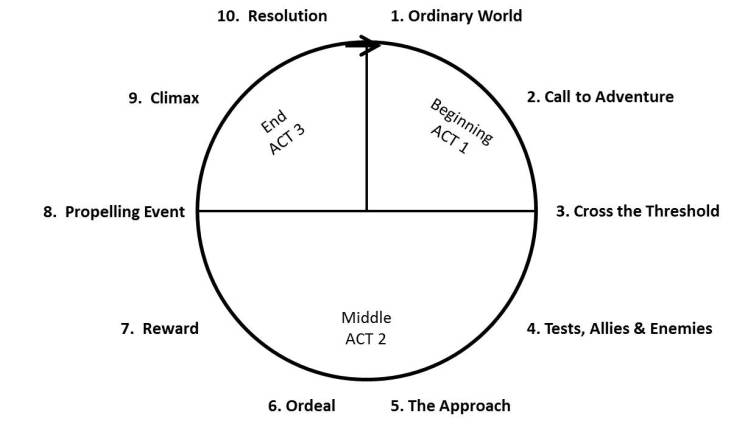
Last post, I discussed how climaxes often involve a literal or symbolic moment of Death and Resurrection. The Resolution generally echoes this, wrapping up plot lines and often implying what is to come next. The very word “resolution” carries this double meaning of “ending” and “action-to-come.” Keeping this in mind, let’s examine some of the types of scenes we’re likely to encounter in a resolution.
Recovery
In stories that involve climaxes with lot of physical action, like lengthy quests or dangerous battles, the resolution will often begin simply enough with the characters resting, recovering, eating, and healing after their exertions. They’ve certainly earned it!
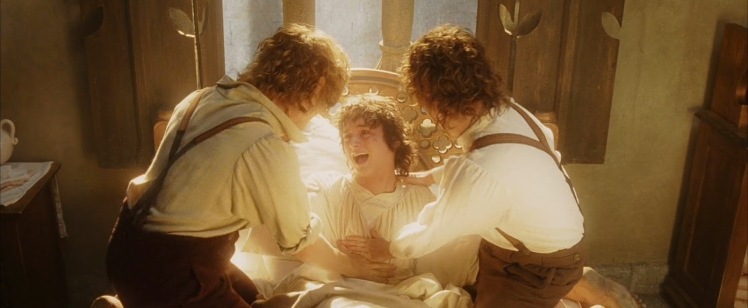
Lying around isn’t always exciting, but we all need some rest, and these bedridden moments provide a chance for useful discussions…
Further Explanations
Often characters will discuss what happened in the climax, to help clarify any logistics or uncertainties in the reader’s mind. In the clip from the end of Harry Potter and the Sorcerer’s Stone that I featured in the last post, Dumbledore explains to Harry (and the reader) how he was able to defeat Professor Quirrell/Voldemort. This helps wrap up the plot.
Discussions often also explain the results and impact of the climax, detailing the logistics of the character’s new reality and giving us a sense of what their life will be like now that the adventure is over. This is when we find out things like: Who ends up with whom? Now who’s in charge? Who lived or died? Where will the protagonist live? What’s their new job in this new state of affairs? etc.
Books that mark the end of a series may spend numerous chapters going into such details. Christopher Paolini’s novel Inheritance, which closes his cycle of books about Eragon the Dragon Rider, has an extended ending like this, which is fairly common in fantasy where readers may be curious about not only the future of the characters but also the future of the whole story-world, its politics, and magic.
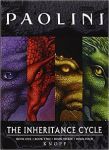
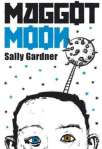

Other stories with more open endings, like Lois Lowry’s novel, The Giver, or stories where the protagonist dies in the climax, like Sally Gardener’s Maggot Moon (spoiler alert!), obviously don’t have further explanations or discussions. The resolution is almost entirely implied, maybe in just a few lines or words, and we are left to decide for ourselves what the fallout for the character (if they survived) and their world will be.
Retelling One’s Own Story
Sometimes, discussions in the Resolution involve the main character recounting their whole journey to other characters. (The authors naturally summarize such retellings!) Logistically, this gets everyone in the loop because secondary characters may have only accompanied the protagonist on part of the journey and need to be filled in on the rest. But symbolically, this recounting of one’s complete journey is a way for the character to make whole their experience and by giving it voice, they take ownership over that experience and the changes it has effected in them.
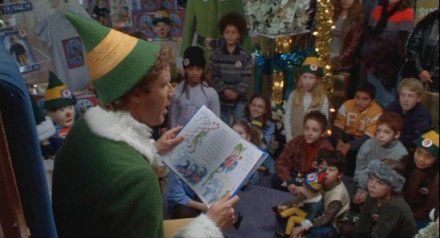
Contrasting Scenes
Indeed characters usually change over the course of their journey to become more balanced, whole, and complete. Even tragic characters who don’t achieve their goals typically come into some greater knowledge or recognition of their own flaws at the end of the story. Authors will often show these changes by having scenes, images, or phrases at the end that contrast earlier moments.
Let’s look at Brave again. The story is essentially about healing a mother-daughter rift. The contrasting images are simple and effective: early in the film, the heroine Merida rides her horse through the kingdom on her own (her mother thinks it’s unladylike). At the end, her mother rides alongside her. Likewise, early in the film, Merida expresses her disgust with needlework (Mom’s favourite pastime). Now, she’s helping her mother finish a new tapestry.
Benefit for Others
The reconciliation between Merida and her mother reminds the various bickering clans of their affection for one another and as we can see, everyone is getting along a lot better. This often happens: the protagonist’s journey provides some sort of benefit to the wider world at large. Sometimes, like in Brave, this is a fairly symbolic benefit and sometimes it is more literal, with the protagonist’s actions bringing safety, money, medicine, or some other useful boon to those around them.
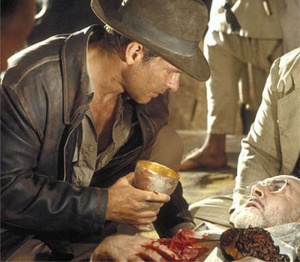
Christopher Vogler calls the resolution stage “Return with Elixir” to emphasize the widespread benefit achieved through the protagonist’s actions.
Set-up for Sequels
If the book/film forms part of a series, the resolution may be temporary, with hints of new issues or unresolved plot lines that will form the plot-arcs for future stories. This happens in that final Harry Potter clip as well: Harry asks if his victory over the Dark Lord means Voldemort is gone for good, but Dumbledore says “there are ways in which he can return” and he will certainly try some of those ways in the books to come!
Rhythm of Life
Even if there are no sequels, almost all endings have a sense of new beginnings. After all, the hero’s journey is typically portrayed as a cycle, and this resolved period of stability at the end of one story may turn out to be the Ordinary World the character leaves behind on their next transformative journey. This again echoes the combination of death and rebirth so potent in storytelling. For so goes life and the waves of the world. One era ends and the next begins with new adventures ahead!
Thanks for taking this journey with me! I’ll be adding one more post that lists a few books and videos with further info on hero’s journey plot lines. I’ve certainly enjoyed writing these posts and hope they’ve provided benefit to you and your understanding of the fascinating, resonant structure that underlies so many great stories.
Let old picture links be forgot and never brought to mind? Nah, here they are:
https://russellfhirsch.files.wordpress.com/2017/01/02318-21.jpg
http://www.bbc.com/news/entertainment-arts-22949353
https://www.pinterest.com/pin/293015519486232291/
http://herlifewithbooks.com/2013/12/06/the-most-wonderful-time-of-the-year/